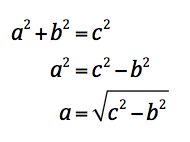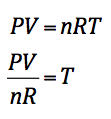One of the things that excites me the most is seeing someone make a living out of their passion. I had the privilege of interviewing Susan Weiner today. She has been in her profession for more than 20 years and is living her passion. She’s a freelance financial writer and author of Financial Blogging: How to Write Powerful Posts That Attract Clients. She blogs atInvestmentWriting.com/blog. I highly recommend that you check out her work. First, let her tell us a little bit more about what she does and how it involves math.
Can you explain what you do for a living? (Be specific!)
I write and edit white papers and investment commentary for financial firms. You know how some people have great ideas but lack the time or skill to put them into writing? I interview them—and use their data—to put their ideas into persuasive writing. Some of their data include numbers generated using math.
When do you use basic math in your job?
I use math when I write investment portfolio performance commentary. If you own a mutual fund, you receive semiannual reports about your fund’s performance. Some of that commentary is based on data called attribution analysis. It identifies which investments contributed to positive returns and which investments detracted. This data is reported in percentages.
Let’s consider an example. A stock fund increased in value by 5% over one year. Where did that come from? How much of that was from specific stocks that the fund manager bought or sold? How much was from overall market growth or the performance of a specific industry? The percentages generated by the attribution analysis software explain which decisions helped and hurt the fund. By looking at lots of these numbers and finding patterns among them, I develop an objective basis to write about why the fund performed as it did.
Do you use any technology (like calculators or computers) to help with this math? Why or why not?
I sometimes use Excel spreadsheets to rearrange the attribution numbers to make them easier to analyze. For example, I may sort the list of stocks so that the largest contributor to performance is at the top, followed by other contributors in descending order.
How do you think math helps you do your job better?
Without math, I wouldn’t have any objective data to inform my understanding of fund performance. With math, I can form and test hypotheses by looking at the data. When I get a chance to interview the fund manager, I can ask questions that test and expand on my hypotheses. The numbers don’t tell the entire story, so it’s important to get input from the professionals who manage a fund.
How comfortable with math do you feel? Does this math feel different to you? (In other words, is it easier to do this math at work or do you feel relatively comfortable with math all the time?)
I don’t love math, but I like how numbers make my job easier by providing insights. I do what’s necessary to obtain those insights.
What kind of math did you take in high school? Did you like it/feel like you were good at it?
I stopped after algebra and geometry. I did not take calculus, although now I wish that I had forced myself to struggle through it. Math did not come easily to me.
Did you have to learn new skills in order to do the math you use in your job? Or was it something that you could pick up using the skills you learned in school?
The skills that I had to learn weren’t mathematical. When I studied to earn my credential as a chartered financial analyst, a credential held by many fund managers, I learned about financial analysis. I also learned about Excel spreadsheets, which help me format the numbers to make them easier to analyze.
Anything else you want to mention?
Don’t underestimate the power of learning to write well about the numbers generated by math. That got me one of my first job offers in college, when my statistics professor asked me to help students in his class. Today, writing about numbers helps me to help my clients communicate better.
It sounds like even if you don’t love math, you can learn to respect it and get along with it like Susan does. Interested in knowing more? Let me know, and I will make a connection with Susan for you.
















